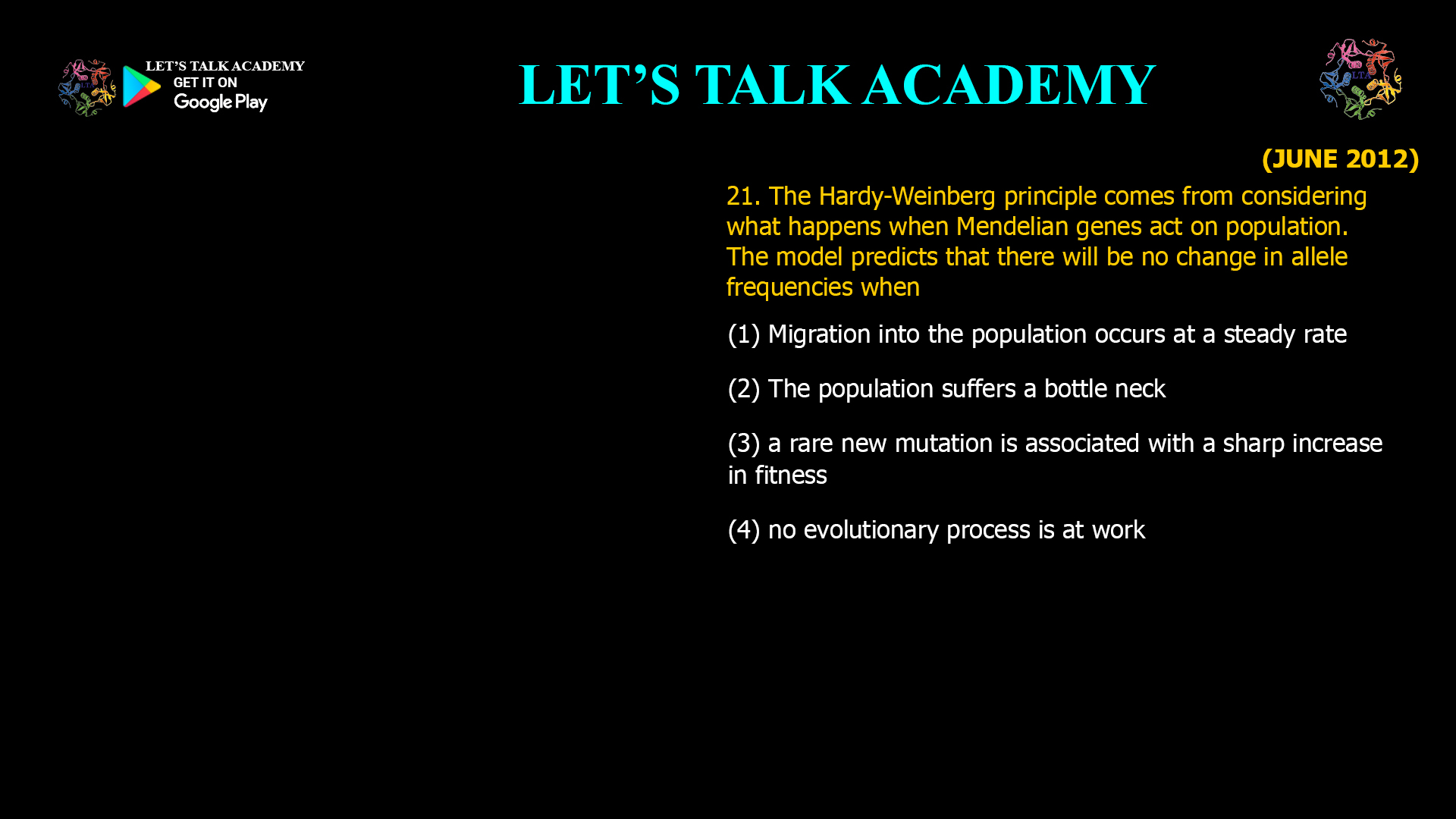- The Hardy-Weinberg principle comes from considering what happens when Mendelian genes act on population. The model predicts that there will be no change in allele frequencies when
(1) Migration into the population occurs at a steady rate
(2) The population suffers a bottle neck
(3) a rare new mutation is associated with a sharp increase in fitness
(4) no evolutionary process is at workHardy-Weinberg Principle: When Will Allele Frequencies Remain Constant in a Population?
The Hardy-Weinberg principle is a foundational concept in population genetics, providing a mathematical model to predict how allele and genotype frequencies behave across generations. This principle is based on the behavior of Mendelian genes in a population and helps scientists understand the forces that drive evolution—or, crucially, when evolution does not occur.
What Does the Hardy-Weinberg Principle State?
The Hardy-Weinberg model predicts that allele frequencies will remain constant from generation to generation—that is, the population will be in genetic equilibrium—if no evolutionary processes are at work. This means that the genetic makeup of the population does not change over time, provided certain strict conditions are met.
The Five Key Assumptions for Hardy-Weinberg Equilibrium
For a population to remain in Hardy-Weinberg equilibrium, these conditions must be satisfied:
-
No mutation: No new alleles are introduced into the population.
-
No migration (gene flow): No movement of individuals or gametes into or out of the population.
-
No natural selection: All genotypes have equal chances of survival and reproduction.
-
Random mating: Individuals mate by chance, not by genotype or phenotype.
-
Infinitely large population size: Prevents random changes in allele frequencies (genetic drift).
Evaluating the Options
Let’s look at the scenarios provided:
-
(1) Migration into the population occurs at a steady rate:
Migration introduces new alleles, changing allele frequencies and violating Hardy-Weinberg equilibrium. -
(2) The population suffers a bottleneck:
A bottleneck drastically reduces population size, increasing genetic drift and altering allele frequencies. -
(3) A rare new mutation is associated with a sharp increase in fitness:
Mutations introduce new alleles, and if they increase fitness, natural selection will act on them, changing allele frequencies. -
(4) No evolutionary process is at work:
This is the only scenario where the Hardy-Weinberg model predicts no change in allele frequencies. If all evolutionary forces—mutation, migration, selection, and genetic drift—are absent, and mating is random, the population remains in genetic equilibrium.
Conclusion
The Hardy-Weinberg principle predicts that there will be no change in allele frequencies only when no evolutionary process is at work.
Correct answer: (4) no evolutionary process is at work
-



